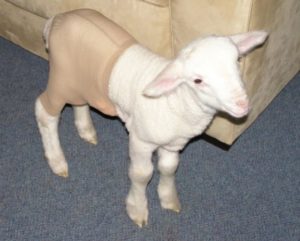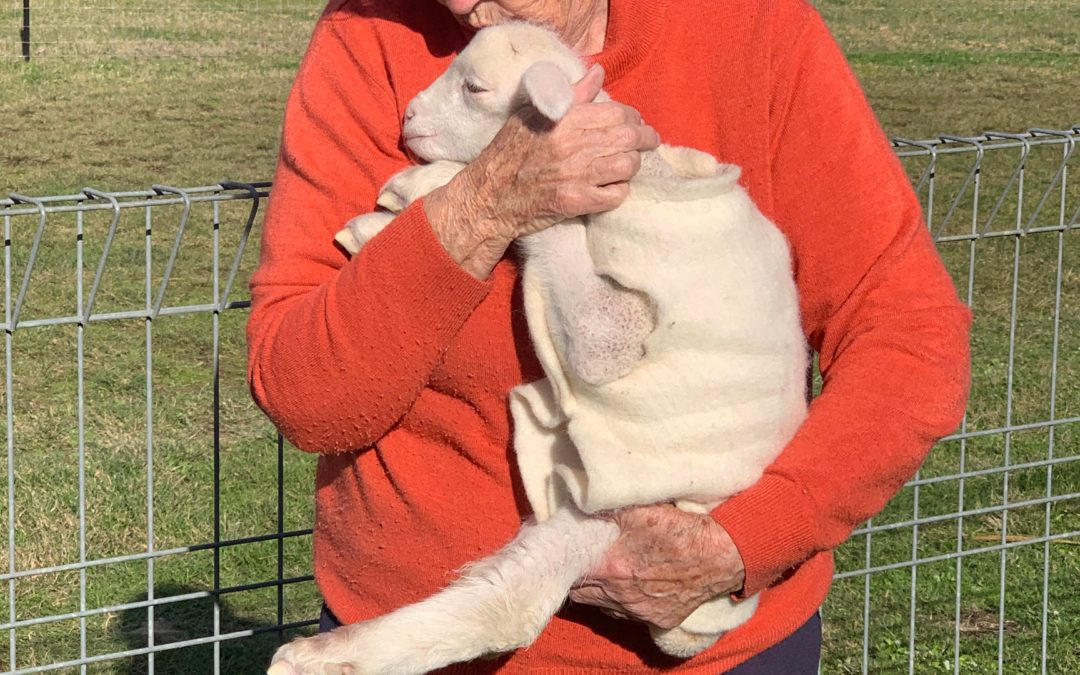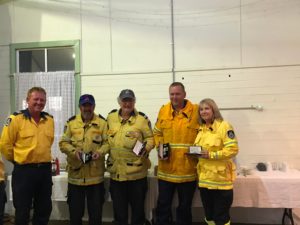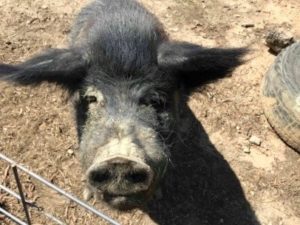Very sadly, in Australia, lambs and sheep are raised for their meat, milk, wool and skins. A lot of farmers practise winter lambing to produce the highest number of lambs. In almost all cases sheep and their babies are not provided sufficient shelter from the extreme weather or protection from predators, resulting in a high mortality rate. Mothers with multiple births suffer from increased stress levels, and can prolapse, become downed and die.
It is estimated (by the farming industry) that up to 15 million lambs die within the first 48 hours of life annually in Australia alone. The two main causes of death are hypothermia and starvation.
Main Photo of Frances and Tiny Tina (named because she was so tiny when she was pulled out of her mum) was the only lamb to survive out of 11 and this also very sadly included her twin.
Fostering an orphanded Lamb is one way to Help and here are some words from Frances, one of Peanuts foster mums: “Living on a property I took an interest on what the owners were doing and asked if i could be of help. I love the animals getting to know you and when its feeding time. I am fostering a lamb, “Tiny Tina” at the moment. She is so cute when she springs up and down on four legs and sort of tries to turn in mid-air. I am retired so I find it fairly easy to care for the animals and once you are in a routine it flows nicely, although it is a bit cool with the late-night feed. I have the support I need from Peanuts and also there is contact with a vet if needed. I would recommend fostering if you have the time and patience to put into it. It’s a bit like having a baby it needs feeding regularly. You have to be a bit patient and love animal.”
Been a foster mum is one way you can help, but remember, as France said: Having the time is very important. If you cannot foster but would still like to be a part of rescuing some beautiful fur and feathered friends, check out: How to Help at the top of the page.
 (Stock photo used)
(Stock photo used)
A couple of important things to note:
Colostrum: the first milk mammals produce, is extremely important for the health of their newborns. It provides them with disease-fighting antibodies, as well as essential nutrients. It is critical that lambs receive colostrum in the first 24 hours of life to give them the best chance at survival. Colostrum can still be beneficial up until the lamb reaches 48 hours old.
Feeding: Generally, lambs do not know when to stop drinking and drink too quickly, therefore consuming more than their stomachs can handle. This can cause bloat, scours (diarrhoea) or aspiration (inhaling liquid). These conditions are extremely serious and can kill a lamb very quickly, which is why correct feeding is so important. You can buy the correct Lamb feed from a produce store. Please do not give them Cows milk, like humans, they are not baby cows.
Nappies are useful: The use of nappies is a great way to ensure your lambs stay clean (as well as your house). They usually begin in the size up from newborn nappies. Either cut holes and pull tails through, or pull the tail to the side to hang outside the nappy. This ensures their tails do not become soiled. Lambs have a tendency to kick their nappies off, to prevent this you can try cutting up a pair of old stockings and use them as little pants on your lamb to hold their nappy.





